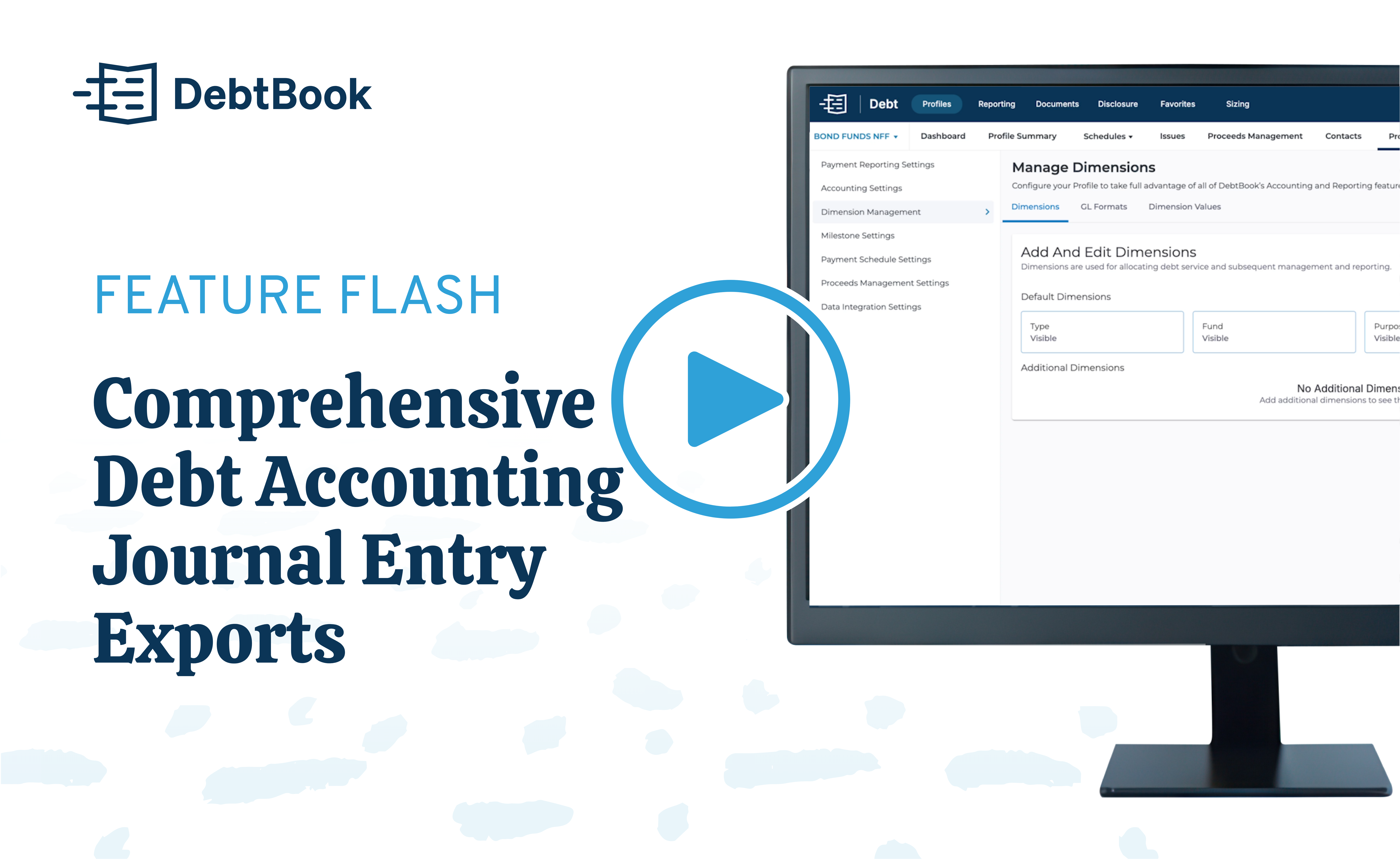In response to the increasing use of licensed software by government organizations, the Governmental Standards Accounting Board (GASB) released GASB 96, including guidance on how to properly account for and report subscription-based IT arrangements (SBITAs).
The goal of GASB 96 is to make financial statements of the government and other GASB-following entities more useful to users by showing more of these contracts, particularly regarding SBITAs.
The deadline to comply with GASB 96 is fast approaching, and updating your accounting to meet the new standard can seem daunting. So below, we’ll discuss why you need an action plan for compliance and how to create that plan.
What is GASB 96?
GASB 96 applies to:
- State and local governments
- Public colleges and universities
- Public hospitals and healthcare providers
- Utilities
GASB 96 was issued in May 2020 and went into effect for the fiscal years beginning after June 15, 2022.
What is a SBITA?
Any IT software subscription contract that falls under GASB 96 is called a SBITA. More specifically, an IT software arrangement may be a SBITA if it meets the following criteria:
- Conveys control of the right to use another party’s IT software for a specified period
- The transaction is an exchange or exchange-like transaction
- If an intangible asset is in combination with a tangible capital asset, the software is not insignificant when compared to the cost of the underlying tangible capital asset
A SBITA term can include the following:
- A non-cancelable period
- Extension options the government or vendor are reasonably certain to exercise
- Termination options the government or vendor are not reasonably certain to exercise
GASB 96 SBITA Examples
Some examples of potential SBITAs your organization may have include:
- Data backup and storage
- Tax collection software
- Fixed asset software
- Budgeting software
- Utility metering
- ERP systems
Note: GASB 96 specifically excludes perpetual licenses from being considered SBITA.
Why You Need an Action Plan for GASB 96 Compliance
Implementing new accounting standards is no small feat. Your organization must understand the new standard, adapt to the changes, and potentially make retroactive adjustments to past subscription accounting.
But designing a predetermined action plan can significantly streamline the implementation of the new standards. In particular, an action plan can help you:
- Navigate your organization’s complex operating structure to identify all subscription contracts
- Effectively deploy valuable resources
- Prevent duplicating efforts upon the release of subsequent standards
Finding all of your subscription contracts can be time-consuming
To start working toward GASB 96 compliance, you must first locate all your organization’s subscription contracts and determine who is responsible for each one. Depending on how your organization currently manages IT subscriptions, this can require significant time and human resources.
For example, some organizations allow each department or team to contract with IT vendors for their software. This means contracts can be siloed across different parts of the organization, and it may take more effort to reach out to each and gather those contracts.
Implementing GASB 96 can require significant time and resources
Implementing a new accounting standard can take substantial time and effort. You must locate your existing subscription contracts, evaluate each to see if they fit the new standard, apply the standard’s requirements to all fiscal years presented in the financial statements, and more.
Plus, you will need time to train your team on the new standard’s procedures. Completing all these steps takes team members away from other necessary operations.
Can help implement similar standards in the future
The first year of any new accounting standard can take time. However, when you centralize all relevant information, you have a general roadmap to follow that can help you implement and maintain compliance with future standards. As a result, you can save time and minimize potential errors whenever GASB issues a new standard.
How to Build a GASB 96 Compliance Action Plan
Building your GASB 96 action plan itself will take some time. But having a plan offers your team clarity in their roles and provides concrete steps to follow. It may also help shorten the overall process and reduce errors.
To help get you started, we’ve compiled this step-by-step guide to building your GASB 96 compliance action plan:
- Understand the requirements
- Create an implementation timeline
- Establish cross-functional teams
- Collect subscription information
- Identify SBITAs
- Collect costs associated with the identified SBITAs
- Record SBITAs per GASB 96 accounting guidance
- Publish financial statement disclosures
We’ll expand on each in the sections below.
1. Understand your GASB 96 requirements
According to GASB’s summary of GASB 96, the standard was created to “improve financial reporting by establishing a definition for SBITAs and providing uniform guidance for accounting and financial reporting for transactions that meet that definition.”
You will need to understand this new guidance to identify which contracts qualify as SBITAs. These are any contracts that give you control of the right to use an IT vendor’s software — alone or in combination with underlying capital assets as specified in the contract — in an exchange or exchange-like transaction.
You’ll also need to know how to account for them and report them correctly on your financial statements. Additionally, if practicable, you’ll need to apply GASB 96 standards to all prior fiscal years presented in the financial statements.
2. Create your GASB 96 implementation roadmap
Once you thoroughly understand your requirements and responsibilities under GASB 96, you can create your implementation roadmap — starting with the steps necessary to reach the compliance deadline.
This roadmap helps your team understand the new requirements and offers clear expectations regarding the implementation timeline. It also helps them understand their role in the implementation process and manage their time efficiently by providing clear milestones they can plan for in advance.
3. Establish a cross-functional team
Most departments or units across your organization likely use IT software. Coordination between departments will be necessary, so create an interdepartmental team to assist with gathering all IT arrangements.
4. Compile your subscription contracts for analysis
Once your GASB 96 implementation roadmap is completed, allocate time to find and collect your subscription contracts from prior fiscal years and audits.
First, have your point people from each department list their computer applications and software. They should take note of the contracts’ start dates, end dates, and payment terms. Renewal options should also be noted because they impact contract length to define a SBITA under GASB 96.
Specific departments can help streamline this step. For example, the purchasing or procurement department will have vendor-related information. They can communicate with IT vendors to obtain lists of your contracts with each vendor. Meanwhile, the IT department may be responsible for tracking IT software contract details. So, you can bring the list of contracts to them to gather each contract’s details.
5. Verify and evaluate the data for each contract
With the subscription contracts in hand, you’ll need to extract and evaluate the data from each one.
There are four data extraction categories for GASB 96 IT subscription arrangements:
- Subscription term length, including extension options and termination options
- Subscription payment amounts to be included in the subscription liability
- Payments made or incentives received at commencement for inclusion in the subscription asset
- Expenses other than subscription payments
A subscription payment amount can include the following:
- Fixed payments
- Variable payments based on an index or rate
- Variable payments fixed in substance
- Incentives or prepayments at commencement
- Any other payments reasonably certain to be paid
6. Gather project costs
Expenses outside of your recurring subscription fees may also need to be considered. For example, these project costs can include expenses you pay to shop for, implement, and maintain your IT software.
Once you’ve extracted the contract data, you should identify every expense associated with each of your SBITAs and assign them to the correct stage. The three project cost stages are:
- Preliminary project stage: Expenses incurred for activities associated with obtaining the technology the SBITA entails. For example, funds spent to evaluate vendors and technologies or defining system requirements.
- Initial implementation stage: Expenses incurred as the government puts the subscription asset into service. For example, funds spent on system customization or installation.
- Operation and additional implementation stage: Expenses incurred after the IT asset is implemented, aside from any spending meant to increase the asset’s efficiency or functionality. For example, funds spent on technical support.
These costs may be accounted for differently than your IT software subscription payments. You’ll need to understand how to record these costs once you implement GASB 96.
7. Key your schedules and create a single source of truth
Since you are likely gathering contracts from numerous team members or departments across your organization, create a single source of truth. This will provide a central area to store all SBITA data and information.
Spreadsheets might seem like the simple solution, but they are cumbersome and prone to error — especially in larger organizations. For example, it’s easy for one team member to accidentally override critical data another member entered. Spreadsheets may also not offer sufficient access control for your needs.
Subscription management software saves time and provides plenty of access control features. It can also automate other tasks, like journal entries and schedules.
8. Review, disclose, and debrief
After your team completes its schedule, you’ll want to review all your data to ensure it’s error-free and compliant with GASB 96. Give yourself plenty of time at this step. You want room to look over your data closely and not have to worry about running up against the deadline.
It is often helpful to bring in a third party, such as a consultant, to get an outside perspective on the data. This can also save time by letting you divert your team toward other tasks.
Once you complete this review, create your disclosures for GASB 96.
Finally, look over your action plan in general. Evaluate what worked well and where you can make improvements. Refining this plan will make continuing GASB 96 compliance more straightforward and help you create a plan for future accounting standards more quickly.
How DebtBook can help
GASB 96 is fast approaching. DebtBook can help make implementation easier. Explore our streamlined implementation process and learn how we can help with contract organization and data extraction, schedule creation, and ongoing compliance. Click here to schedule a demo.
Related reading:
Disclaimer: DebtBook does not provide professional services or advice. DebtBook has prepared these materials for general informational and educational purposes, which means we have not tailored the information to your specific circumstances. Please consult your professional advisors before taking action based on any information in these materials. Any use of this information is solely at your own risk.





.jpg)
.jpg)
